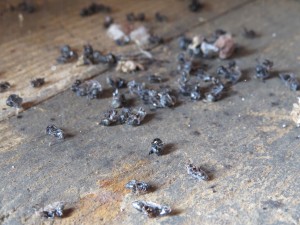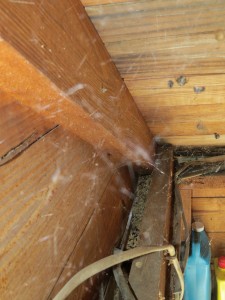Of the ant species that invade homes, carpenter ants cause considerable distress due to their large size. This is particularly true in the spring and early summer, when foraging ants may be found in many rooms within a home. While these foragers are not much more than a nuisance, it is the nearby ant nest that is alarming to homeowners. Especially since carpenter ants can damage wood.
Carpenter ants can be thought of as an indicator species, since they tend to nest in wood that is damaged by moisture. Their presence is suggestive of a roof leak, clogged gutters, poor drainage from the home, or other structural issues that result in water-damaged wood. When nests are found in homes, they are often satellite colonies of the larger nest that is located outdoors in rotting wood such as a tree stump. It should be noted that carpenter ants do not eat wood as food (like termites), but rather use the structure for nesting purposes.
As an urban entomologist, my home is a laboratory of pest management trial and error. This spring and summer I observed carpenter ants in one corner of my garage. On the workbench below, I would occasionally see a dead ant or some frass (the excavated wood and food-stuffs kicked out of the nest). It wasn’t long before common house spiders (Parasteatoda tepidariorum) discovered the ants and started to feed on them, adding to the carnage on my work bench.


As summer progressed, I decided the experiment was over and wanted to rid myself of what I believed to be a satellite ant colony. I inspected the area around the ant sightings, and in the very corner of the garage, in a recessed void, I found what I was looking for – a large pile of frass and many ants. With my vacuum in hand (the same one I’ve used for eliminating yellowjackets), I vacuumed up as many ants as possible, plugged the end and left the vacuum in the heat of the sun for two days. Problem solved! Now I just need to find the parent colony.


Learn more in our carpenter ant factsheet!